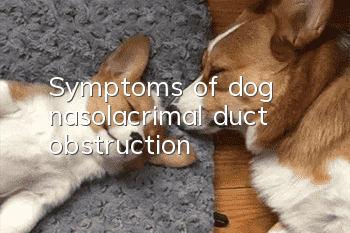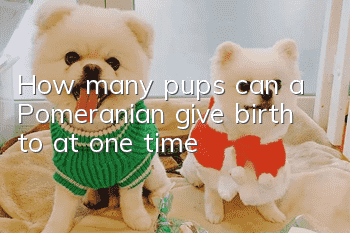Symptoms of dog nasolacrimal duct obstruction

The main symptoms of dog nasolacrimal duct obstruction are excessive tears, heavy tear stains, long-term moistness of the lower eyelids, and purulent secretions adhering to the eyes, which are more common in white Bichons and Pomeranians. Due to being soaked by tears for a long time, the skin under the corners of the dog's eyes will also have some symptoms of hair loss. It is recommended that owners use eye wipes to wipe the tears secreted by their dogs frequently, which can relieve the symptoms of heavy tear stains in dogs, and take their dogs to the pet hospital for treatment in time to clear the nasolacrimal ducts.
1. What to do if your dog’s nasolacrimal duct is blocked
There are two main options for dog nasolacrimal duct obstruction: conservative treatment and surgical treatment. The specific treatment options are as follows:
1. Conservative treatment
If your dog's nasolacrimal duct is only slightly blocked, you can treat it conservatively and give your dog some antioxidant eye drops or drugs to clear the nasolacrimal duct. Use it twice a day. You must insist on using it to be effective.
2. Surgical treatment
If the dog's nasolacrimal duct is severely blocked, you can only take the dog to a pet hospital for nasolacrimal duct dredging, and surgically install a drainage tube for treatment.
2. Precautions
In daily life, owners need to clean their dogs' eyes regularly and remove secretions in a timely manner, which are one of the important measures to prevent nasolacrimal duct obstruction. It should also be noted that dogs with short noses are generally prone to this type of disease, so owners need to pay special attention to the nasolacrimal duct problems in such dogs.
- How to train a golden retriever to stand
- What should I do if my dog doesn’t have enough breast milk?
- Are Golden Retrievers bred and trained to watch the house? How naive!
- How much do you know if your pet dog tilts its head and kills you? Be careful because it may cause a brain disease!
- What can’t Eastern Sichuan Spaniels eat?
- Can I give bread slices to my dog?
- What are the common skin diseases in dogs and how to prevent and treat them?
- Is osteomyelitis painful in dogs?
- What are the early symptoms of canine distemper? What are the treatments for canine distemper?
- If a dog has been vaccinated against rabies, does it still need to be injected if it is bitten?



